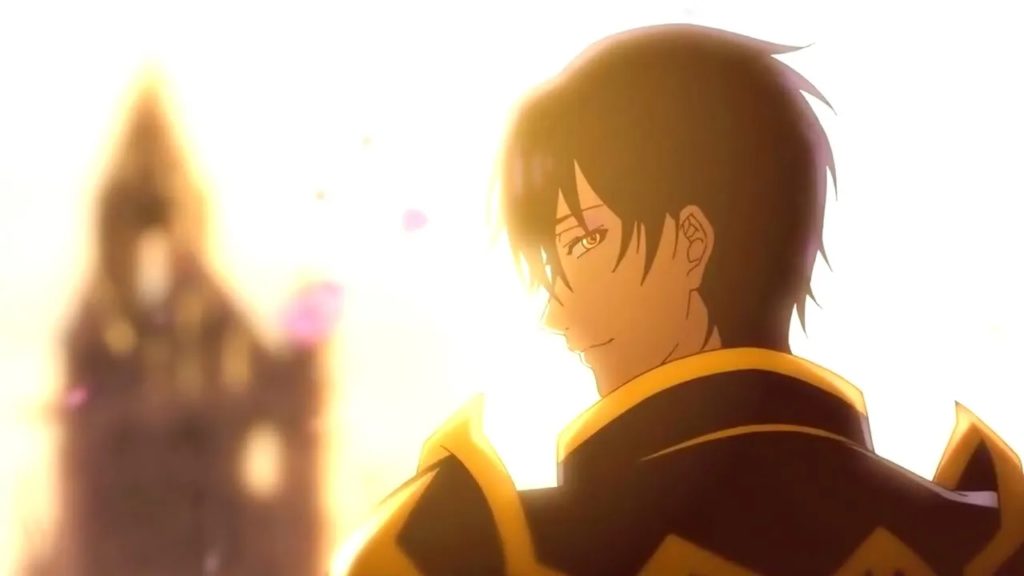Books: Anime’s Identity
December 16, 2021 · 0 comments
By Jonathan Clements.

Stevie Suan’s new book, Anime’s Identity, cannot resist telling a story from the production of King’s Avatar (above), a 2019 Chinese animated series that subcontracted some of its animation work to a studio in Japan, only to send back the materials on the grounds that the Japanese work was not of high enough quality. That was definitely a bad day at the office for someone, but was it trolling for the hell of it, or a sign of a true sea-change in quality control and expectations?
It’s just one of his enlightening anecdotes about the anime industry’s relationship with producers, investors and consumers outside Japan, particularly in East Asia, where “Japanese” animation has been sub-contracting piece-work since the 1960s. Notably, Suan’s book is also a readable and concise digest of much of the theory and research on anime in the last decade, serving as a valuable primer for the new scholar, helpfully translating some of anime’s more verbose recent critics into understandable English.

The Macross franchise is his touchstone for illustrating the changes in the medium over the years, tracking it through its original 1982 broadcast, its various versions and recombinations abroad, and later instalments made, at least partly, in South Korea and China. This crosses over not only into issues of reception and production, but of straightforward ownership – in 2015, a newly formed Japanese subsidiary of the Chinese company Haoliners bought a 51% stake in Artland, the studio that “made” Macross.
Changing stylistics and storylines in Macross help Suan track the influence of new character designers, and new underlying social concerns, through Macross Frontier, which he regards as shojo-influenced, to the idol costumes of Macross Delta. But idols were always part of Macross from the outset, starting with Lin Minmei, the girl who sang a song about love to an invading fleet of aliens… a girl who, as Suan gleefully points out, was supposed to be Chinese.

Suan gets to grip with an issue that has hounded people who write about anime for decades – to what extent can we get away with an essentialist notion that it “comes from Japan”? The Clements and McCarthy Anime Encyclopedia has clung for the last twenty years to the idea that while many of the lower-ranking echelons might comprise colourists or inbetweeners in Seoul or Shanghai, anime remains “Japanese” for as long as its leading decision-makers and creatives are themselves Japanese. But what happens when Michael Arias directs Tekkonkinkreet, or Evan Call scores the music for Violet Evergarden? After 2015, when the collapse of the Manglobe production house sent Japanese producers scurrying into the arms of Chinese investors, a whole slew of “anime” productions were paid for by Chinese capital. Suan argues that this doesn’t bother the Japanese in the slightest, particularly when the usual-suspect voice actors provide all the audio in the Japanese release. It only becomes an issue for people like me, trying to work out whether the likes of Bloodivores or Hitori no Shita deserve an entry in an encyclopaedia of “Japanese” animation.
Suan argues that many of the Chinese studios have become so inured to Japanese work that it shouldn’t be surprising that their original output seems to resemble anime. When we can point to at least one studio in Shanghai, and three in Wuxi that solely work on Japanese productions, is it all that surprising that when such animators finally get to work on local productions, they start putting out stuff about giant robots and idol singers? Suan also points to another angle, that the tropes and traditions of, say, the mecha show were perfected in the 1970s because they helped sell toys. Yoshiyuki Tomino might have invented much of what made Gundam what it was, but Suan thinks it unfair to regard a Gundam clone in China as a mere “knock-off.” This is, he writes, what these animators have spent an entire generation learning what animation is supposed to look like. They are not knocking anything off; they are writing what they know. I understand where he is coming from, here, but sometimes knocking stuff off was exactly what they were doing.
He also alludes to the contradictions embedded in the Chinese animation industry, with strident government directives to make animation that affirms “Chinese culture” – although that itself is a moveable feast depending on the mood of the Communist Party policy wonks – versus business pressure to do something like anime, but cheaper.

Suan examines the story that anime tells about itself, both in terms of the hype of the Cool Japan initiative, and the self-referential accounts to be found in the series Shirobako. Then, just for funsies, he digs down into the Shirobako production credits, and finds Vietnamese, Filipinos and, crucially, a South Korean director working on the very episode that discusses supposedly “Japanese” looks and shots.
But this is not a Gotcha! game, or one of those tedious meetings with producers that devolve into “Does it have to be Japanese?” Suan is merely addressing a fundamental issue within the field, which is that for years some people (including me) have insisted that anime has to be Japanese, while others (also including me) have been gingerly pointing to the fact that so much of it isn’t. There are widespread financial and cultural implications for this, that rear up every time something on Netflix is derided for being not “anime” enough, and something on BiliBili is attacked for being “too anime.”
Returning to his Macross example, Suan notes that “almost all” of the inbetweening on Macross Plus, one of the icons of 1990s anime, was done in South Korea, and that three studios in Shanghai were all over Macross 7 like white on rice. By Macross Delta, foreign names were seeping into the production credits on the other side of the Anime Encyclopedia’s redline – what Suan calls the place of “authorship and agency.”

Suan’s earlier work focused on issues of actual performance within anime. He returns to this with a chapter analysing acting in anime – voice-acting and embodied motion – in order to show how broader concepts can impact work at a performance level. There’s some lovely stuff in here about the seating plan of a stereotypical anime classroom, where the protagonist is always in the “godly seat” by the window, but Suan also zooms in from his macro view of an entire industry, to how the topics he has been discussing might influence single moments and pivotal scenes in an episode of Macross Frontier.
He goes on to examine transformations in Evangelion – how it defined the tropes of a new sub-genre that people insist on calling sekaikei (I, and I suspect, Suan as well, regard that as a bit unnecessary), and linking the virulent spread of its concerns to the sudden upwelling of “light novels” in the 2000s in which, to reduce to a severe degree, a high-school romance with a weaponised girl is somehow linked to the end of the world. Suan points to the hand-waving lack of detail in many light novels as a stylistic convention that itself has developed out of generations of anime tropes, with many a writer just assuming that, for example, mecha are a thing, and we don’t need to be told how they work anymore.

He finishes with a discussion of anime identity as perceived through “Holy Lands”, those otaku-bait tourist destinations that have become such an integral part of anime location hunts. Interestingly, he discusses otaku pilgrimages as a phenomenon that only really arose during the late 2000s, whereas it was identified as a pre-existing element of fan culture in Otaku Marketing in 2005. But this is part of his point, that pilgrimages to anime locations were a fan thing that was appropriated and super-sized by the attentions of the Cool Japan initiative. His example here is Flavors of Youth, the co-production between CoMix Wave and Haoliners that imparted a massive chunk of pound-shop Shinkai nostalgia not to places in Japan, but in China, but appears to have been sold in China as if it were Japanese, despite boasting two Chinese directors out of three. Suan observes that, ironically, Flavors of Youth appeared to invert much of the more usual transnational production systems, being made largely in Japan… or at least, that’s how it looks on paper.
Jonathan Clements is the author of Anime: A History. Anime’s Identity: Performativity and Form Beyond Japan, by Stevie Suan, is published by the University of Minnesota Press.
Leave a Reply